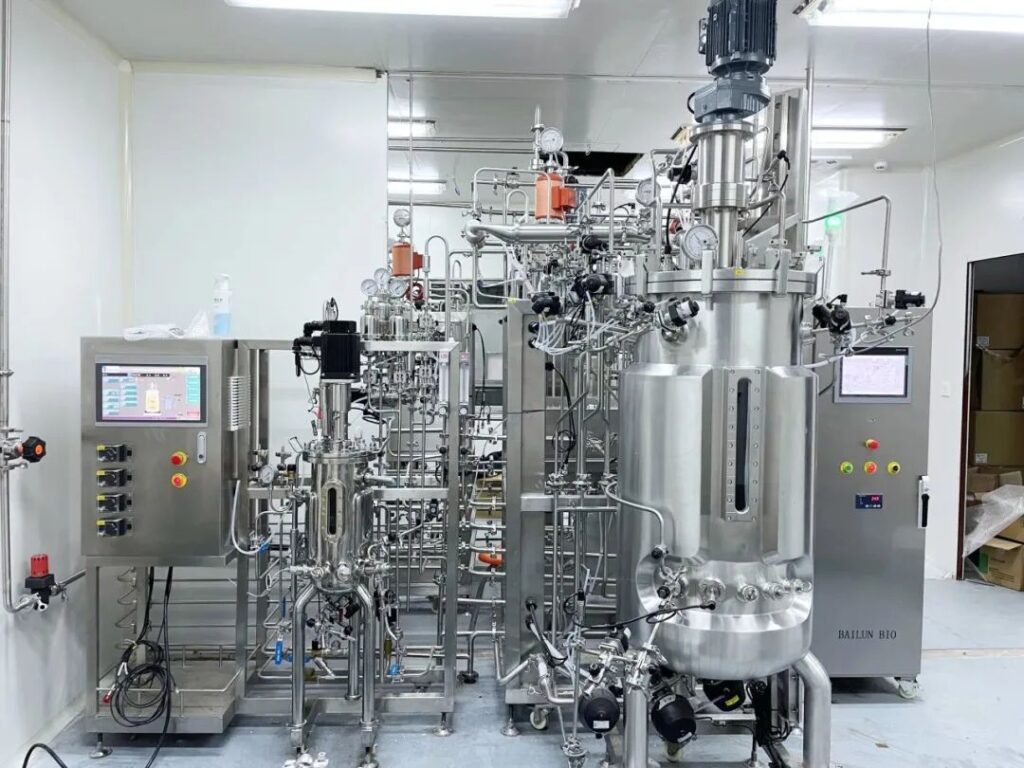Vaccination is the most important public health measure and means for the prevention and control of human infectious diseases. Intramuscular or subcutaneous injection is the most common form of vaccination that induces effective systemic immunity but provides weak mucosal immunity and is less effective in protecting some pathogens infected through mucosa. The ideal oral viral vaccine can not only be painless, cold-chain and self-administered, and quickly achieve large-scale vaccination, but most importantly, it can also induce effective mucosal immunity and systemic immunity at the same time, producing the best protective effect.
1.Live, attenuated oral viral vaccines that have been marketed
The oral virus vaccines that have been marketed include three live attenuated vaccines: oral poliovirus vaccine, oral adenovirus vaccine, and oral rotavirus vaccine. These vaccines use live attenuated pathogens. Like wild-type viruses, live-attenuated virus vaccines can elicit an effective immune response and immunoprotection in the mucosa of the digestive tract by transporting and preventing degradation and maintaining adequate antigenicity in the gastrointestinal and intestinal environment.
1.1 Oral polio vaccine
The oral polio vaccine (OPV) was the first oral viral vaccine to be developed. Since 1960, the live, attenuated oral polio vaccine has been used in humans. OPV-induced serum antibodies prevent the transmission of the poliovirus to the nervous system, thus protecting individuals from polio paralysis. In addition, OP produces a high level of local SIgA immune response in the intestinal mucosa, which is the main site of poliovirus entry and proliferation, compared to the injected inactivated polio vaccine (IPV). This local intestinal mucosal response is extremely effective in stopping human-to-human transmission of wild poliovirus. Studies have shown that OPV has a very low risk of neurotoxicity reversal (1 in 2500000,<>,<>). Although OPV has been shown to have excellent efficacy in inducing humoral and mucosal immunity, the safety of OPV needs to be considered comprehensively according to the goals of disease prevention and control. Since the global successful eradication of the disease through extensive OPV vaccination programs, the risk of acquiring the disease from wild-type pathogens is lower than the risk of acquiring the disease from taking OPV. As a result, OPV has been replaced by IPV in most industrialized countries.
1.2 Oral adenovirus vaccine
For decades, oral replicating adenovirus (AD) vaccines have been used by the U.S. military to prevent respiratory disease of adenovirus types 4 and 7 in recruits. A 1971 study of trainees showed that oral Ad4 and Ad7 serotype vaccines are safe, have no side effects, and are more than 95% effective in preventing adenovirus respiratory diseases. Licensed oral adenovirus vaccines are encapsulated in enteric-coated tablets that allow them to develop asymptomatic infection in the lower intestine while overcoming degradation caused by gastric acidic pH and to generate immunity in the upper respiratory tract, the protective effect of which is associated with the presence of specific serum neutralizing antibodies.
1.3 Oral rotavirus vaccine
Rotavirus is the main pathogen causing severe diarrhoea in human infants and young children. At present, six oral live attenuated rotavirus vaccines have been approved for marketing worldwide, which have played a significant role in reducing the disease burden of global diarrhea, especially rotavirus diarrhea, including the globally widely used pentavalent rotavirus vaccine (RotaTeq) and monovalent rotavirus vaccine (Rotarix), which were the first to be prequalified by the World Health Organization in 6 and 2008, respectively, and one monovalent vaccine and one pentavalent vaccine approved for use in India were also prequalified by the WHO in 2009. In addition, the Lanzhou monovalent lamb rotavirus vaccine (LLR) approved for marketing in China and the monovalent human rotavirus vaccine (Rotavin-M1) approved in Vietnam are only used in the country. Although the efficacy of these vaccines varies, the efficacy in low-income countries is significantly lower than in high-income countries. The reasons for this discrepancy are not fully understood, but they are thought to be multifactorial [1], including the inhibition of mother-transmitted antibodies (rotavirus-specific IgA) obtained through the placenta or breast milk, the effects of concomitant oral polio vaccine, the interference of different human leukocyte antigen blood groups, and the ability to inhibit or interfere with the immune response to rotavirus (RV) vaccine, including malnutrition, environmental factors, and chronic and co-infection. Recent studies have shown that the composition and diversity of the gut microbiota, especially bacteria, may also affect the immunogenicity of oral RV and other oral vaccines.
2.Oral viral vaccine under development
2.1 Oral vector vaccines
Oral vector vaccines can be mainly divided into oral non-pathogenic bacterial vector vaccines and oral viral vector vaccines. Whereas, viral vaccines with oral vectors are mainly viral vectors. Entero-infected viruses are good candidates for oral vaccine antigen vectors. Adenoviruses, in particular, resist the intestinal environment and can infect intestinal cells. The principle is that the target antigen gene is inserted into the viral vector through recombinant DNA technology, and the recombinant viral vector is packaged in vitro to form a recombinant vector virus, and the recombinant vector virus infects the human body through oral routes, and the recombinant vector virus can express a large number of target antigen genes while replicating, thereby activating and inducing a specific immune response against the target antigen. However, the potential safety issues of live virus vectors must be addressed and eliminated, such as wild virus reversal can occur with oral vaccines using poliovirus as vectors. At present, the main oral viral vectors under development are adenovirus vectors, and oral vaccines using rotavirus and poliovirus as vectors have also made some progress.
2.2 Oral protein vaccines
Protein antigen-based oral vaccines against infectious diseases such as dengue, influenza, tetanus, diphtheria, hepatitis and MERS-CoV are already being developed. However, oral protein vaccines are generally less stable and less effective at inducing antibody and cellular immune responses. To overcome these limitations, current research has focused on the addition of adjuvants to enhance the immune response through immunostimulants or immunopresenting systems. For example, polymer microparticles and nanoparticles have been widely used in the development of protein vaccines. The chemical structure of oral protein vaccines needs to be controlled, so there is a need to make better use of natural polymers to design formulations that will continue to be evaluated in clinical studies. The evaluation of vaccine immunogenicity and protection has been limited to the assessment of antibody response in humoral immunity, but cellular immune response is also important, and in-depth analysis of immune indicators and mechanisms related to vaccine protection in this field is needed. In addition, lipid vaccine carriers, including liposomes, bilisomes, and immunostimulatory complexes, as well as other adjuvant carriers, are also being developed, and their further use and optimization will certainly contribute to the production of oral protein vaccines against mucosal diseases.
2.3 Oral nucleic acid vaccines
Oral nucleic acid vaccines are oral vaccines that use nucleic acid (DNA or RNA) as a source of antigen to fight pathogens. RNA vaccines can be further divided into 2 types: modified mRNA and self-replicating RNA. The oral nucleic acid vaccines under development are mainly oral DNA vaccines and oral mRNA vaccines. DNA and mRNA vaccines are of particular relevance in response to the pandemic due to their potential for rapid and low-cost production, but they are sensitive to degradation and therefore difficult to achieve effective oral purposes. Studies have shown that the encoded protein of oral DNA vaccine can be expressed in intestinal epithelial cells, spleen and mesenteric lymph nodes, etc., and can significantly stimulate systemic cellular and humoral immune responses, such as cytotoxic T cell activity and specific IgG antibody production, resulting in the local production of specific secretory IgA (SIgA) in the intestinal mucosa. Currently, the oral DNA vaccine S2-Ag85 vaccine (brucellosis) has been shown to protect the human body, while oral DNA vaccines against viruses are also being developed, including DNA oral vaccines for HIV, influenza, hepatitis B virus, herpes simplex virus, and human papillomavirus. If successful, these vaccines could usher in a new era of oral DNA vaccines to treat diseases. Approved mRNA vaccines to date have been administered by injection, while oral mRNA vaccines are still in the early stages of research, including the delivery of mRNA vaccines via oral capsules. The capsule delivers about 150 μg of mRNA into the stomach of a pig. This is more than the mRNA vaccines currently being used. In the study, the research team found that pig stomach cells successfully produced reporter proteins, but not in other organs and tissues, and the research team said that they would improve the composition of nanoparticles or give higher doses in subsequent studies to increase the absorption of the delivered mRNA by other organs. The research team also said it is also possible that delivery of mRNA to the stomach alone would be enough to induce a strong immune response. The oral administration of this mRNA indicates the potential for further development of oral mRNA vaccines.
About BaiLun Biotechnology Co., Ltd:
BaiLun Biotechnology Co., Ltd. stands as a leading supplier and premier technical service provider, specializing in the provision of comprehensive bioreactor systems and advanced control solutions. Our extensive product line encompasses a wide array of offerings, ranging from bioreactors (fermenters) to animal cell bioreactors, biological shakers, and control systems tailored for bioprocessing applications. With a capacity spanning from 0.1L to 1000KL, we are committed to fostering the growth of China’s bioreactor industry on a global scale.
At BaiLun, we boast a seasoned team of engineers equipped with profound expertise in fermentation processes, biochemical equipment, and chemical technology. Moreover, we actively engage nationally renowned experts and scholars as technical consultants, ensuring the robust technological underpinnings of our products. Central to our ethos is a relentless pursuit of product innovation and technological leadership, all geared towards guaranteeing utmost customer satisfaction. We hold ourselves accountable to prioritize customer benefits, embodying this commitment as the cornerstone of Bailun Company’s core values.
Our diverse product portfolio is meticulously crafted to cater to the multifaceted demands of our clientele. From inception, we have upheld the principles of quality paramountcy, customer-centricity, and integrity-driven operations. It is our unwavering dedication to meeting the evolving needs of our customers that propels us forward. Embracing the tide of economic globalization, we extend a genuine invitation to collaborate with enterprises worldwide, aiming for mutual prosperity and success.
The spirit of BaiLun encapsulates a dedication to customer-centricity, a pursuit of excellence in quality, a commitment to fairness and integrity, and an unwavering drive for continuous improvement and innovation.
Contact Us:
Add:6848# Liuxiang Rd., Jiading, Shanghai, China
Contact Person: Maddie
Email:[email protected]
Phone:+86-134-7276-8163 (WhatsApp)
Website: https://fermentorchina.com/



